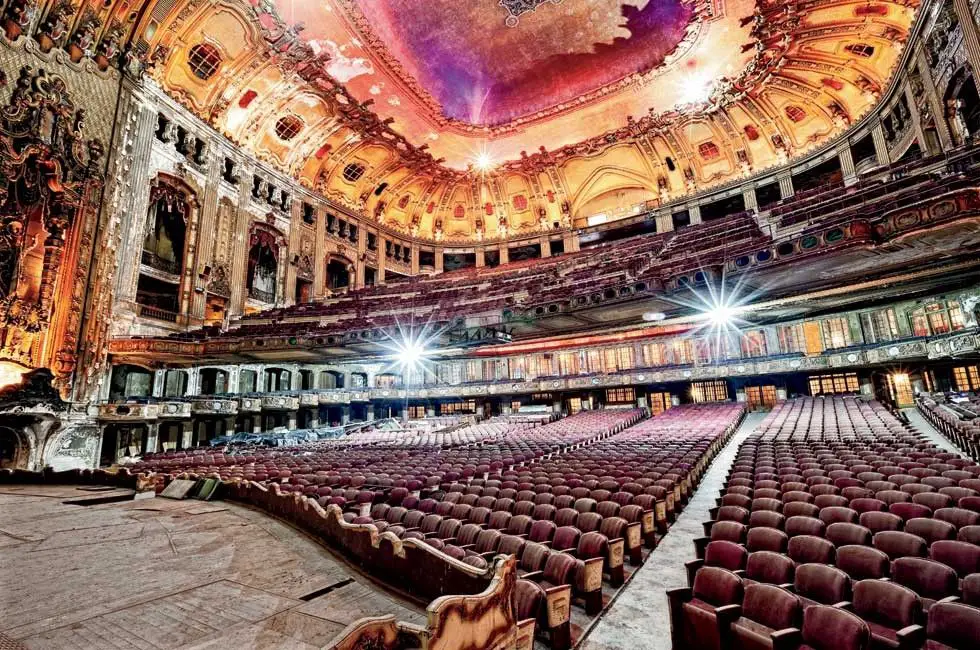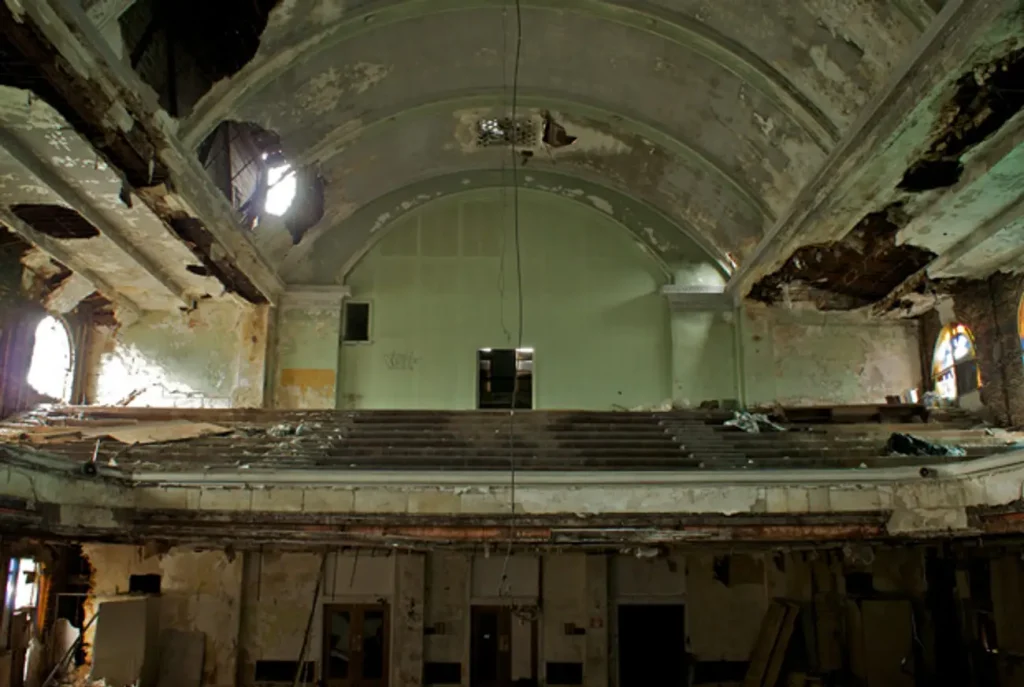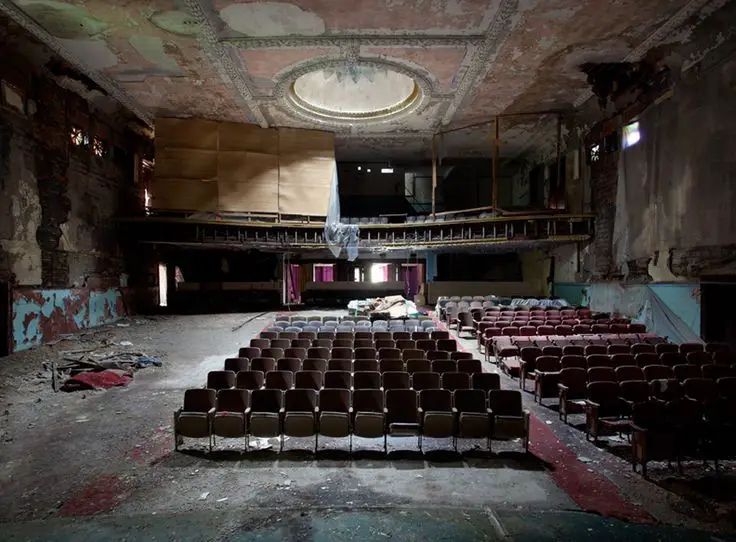An abandoned theater on Roosevelt Road, once grand in its splendor, now retains a majestic aura through the lens of decay. In 1928, the Lawndale Theater frequently featured British silent films, showcasing uncelebrated leading men with names like Percy Marmot. Vaudeville performances were complemented by boxing matches on Tuesday and Wednesday nights, and Fridays featured “Chorus Girl Contests.”

The Lawndale Theater opened its doors on October 19, 1927. Under a ceiling adorned with twinkling star lights, mimicking the night sky, patrons occupied the 2,200 seats in the theater, a notable size for a neighborhood movie-house. The inaugural presentation was the premiere of “The Girl From Rio.” In the subsequent years, the Lawndale showcased numerous British silent films, hosted vaudeville performances, featured boxing matches on Tuesdays and Wednesdays, and presented “Chorus Girl Contests” on Fridays. During the summers, the theater temporarily closed its doors.

In the mid-1930s, the ownership of the Lawndale Theater transitioned to the mob. Frank “The Enforcer” Nitti, an associate of Al Capone, acquired the theater through his company. Despite the change in ownership, the Lawndale continued to operate as a theater, with occasional rentals for various functions.

RECOMMENDED: Explore This Abandoned Mansion In The Middle Of A Virginia Golf Course

During World War II, the neighborhood underwent a swift demographic transformation, becoming predominantly African-American. The Lawndale Theater experienced multiple changes in ownership during this period and eventually reopened as the Rena Theatre in late 1949. The theater adopted a new format, featuring second-run triple features on weekdays and music revues during the weekends.

In 1961, according to legend, a gang leader was fatally shot in the main staircase, leading to the closure of the Lawndale Theater. In 1964, the venue reopened as a church and served in that capacity for four decades until its closure in the early 2000s. Today, it stands abandoned on Roosevelt Road, once a majestic symbol of splendor, now exuding a majestic ambiance of decay.

As of the summer of 2017, the building has been demolished, marking the end of its presence on Roosevelt Road.
RECOMMENDED: Huston House: Step Inside This Abandoned Home On Butler Island, Georgia